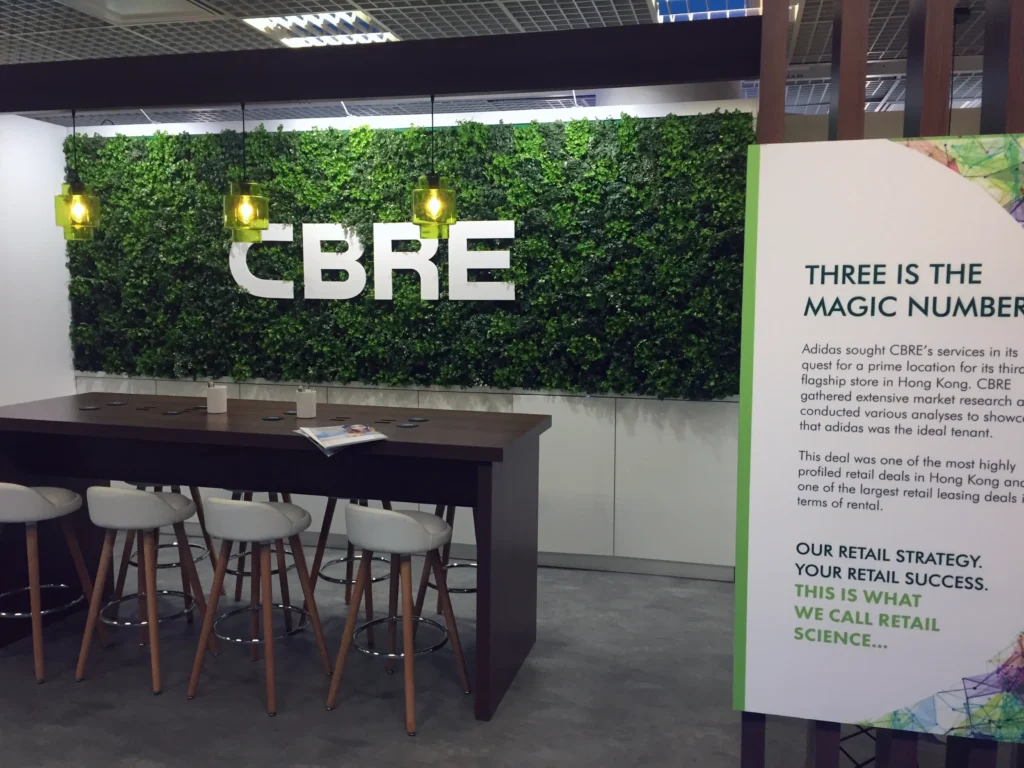
For nearly a decade, we’ve been helping CBRE make its mark at MAPIC, the annual global meeting place for retail and property players. Held each year in Cannes, the 2025 edition marked the event’s 30th anniversary, and it remains the place where big ideas, big deals and even bigger conversations happen.
For CBRE, it’s a real focal point of the retail calendar—an unmissable opportunity to connect with clients and prospects, and to showcase their world-leading expertise.
But what exactly does it take to nurture a partnership that’s spanned nine years (and counting)? Let’s rewind to 2016, when a simple PowerPoint deck turned out to be the spark for something much bigger.

That first project might have been small, but it set something exciting in motion. CBRE saw in us a creative team with a lot more to offer; in particular, the potential to help bring their brand to life in new, imaginative ways.
And as luck would have it, MAPIC—that major event for CBRE—was just around the corner. The team needed a creative partner they could trust with all their exhibition needs, so up we stepped.
And the rest? Well, you know how the saying goes.

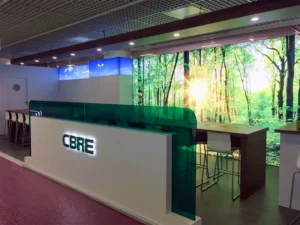

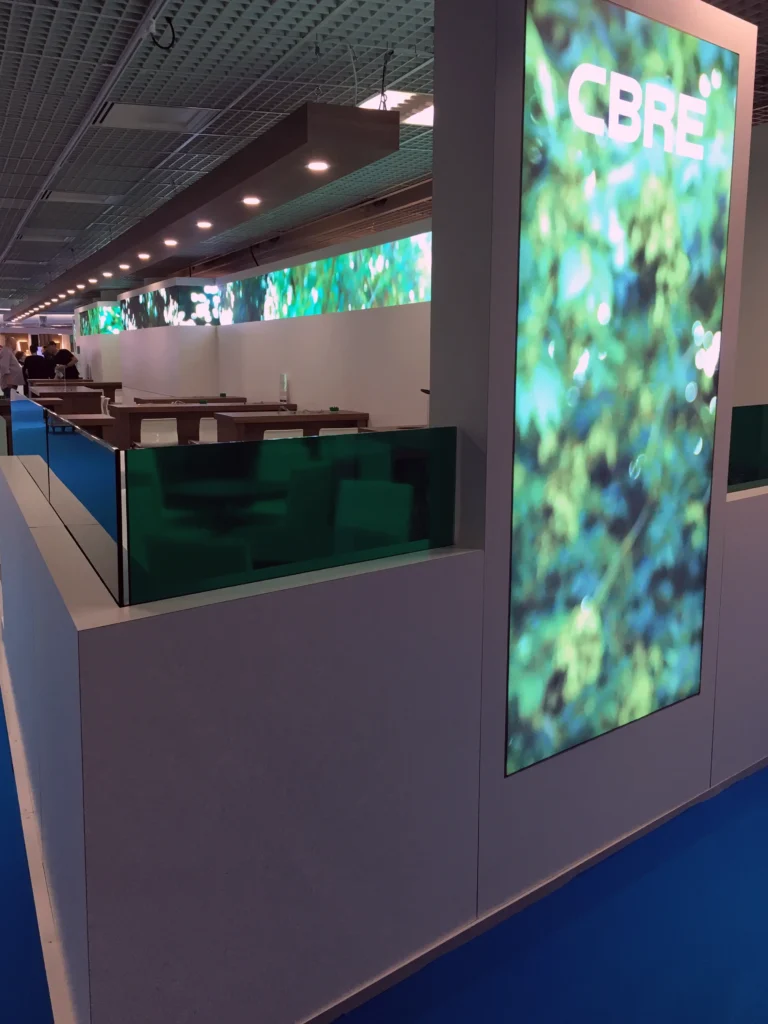
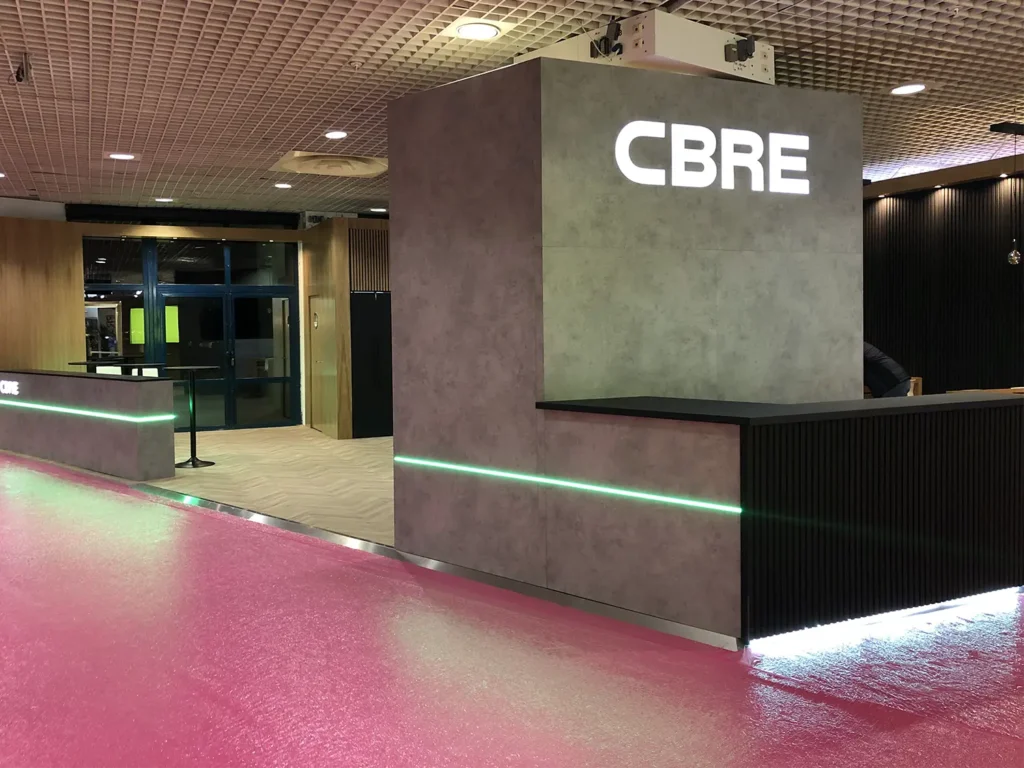
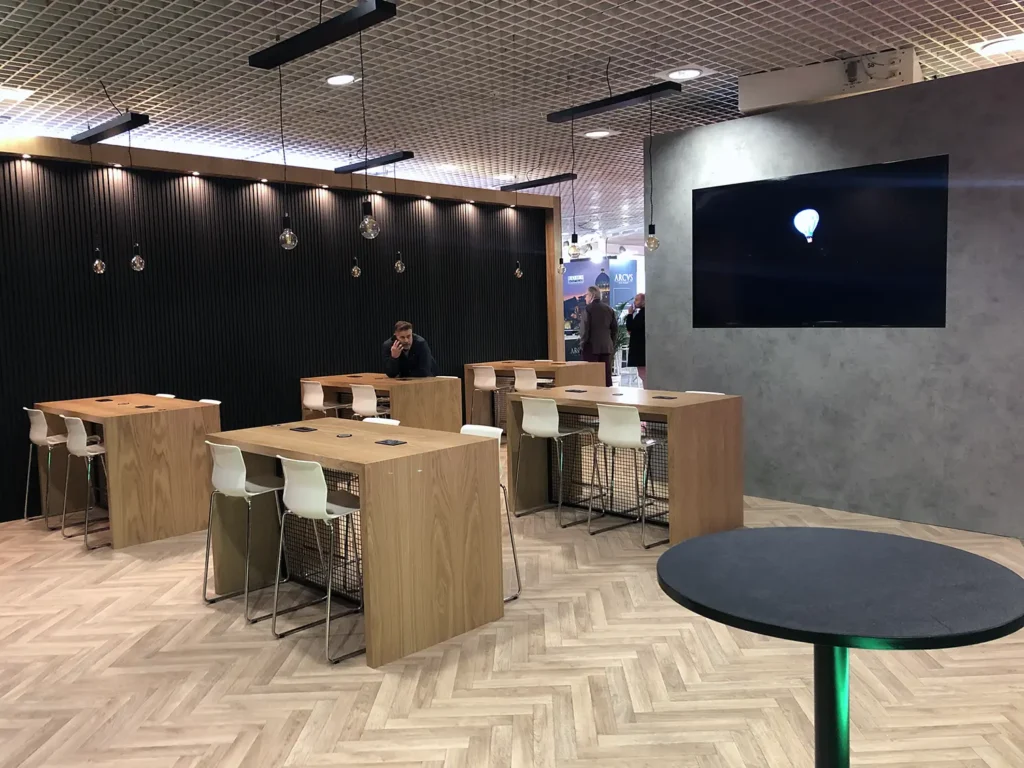
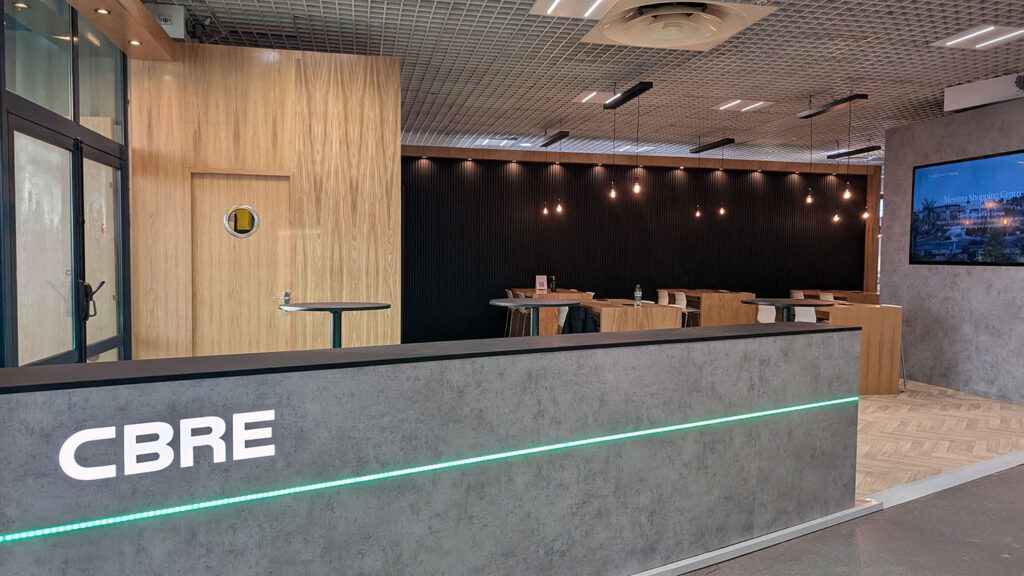

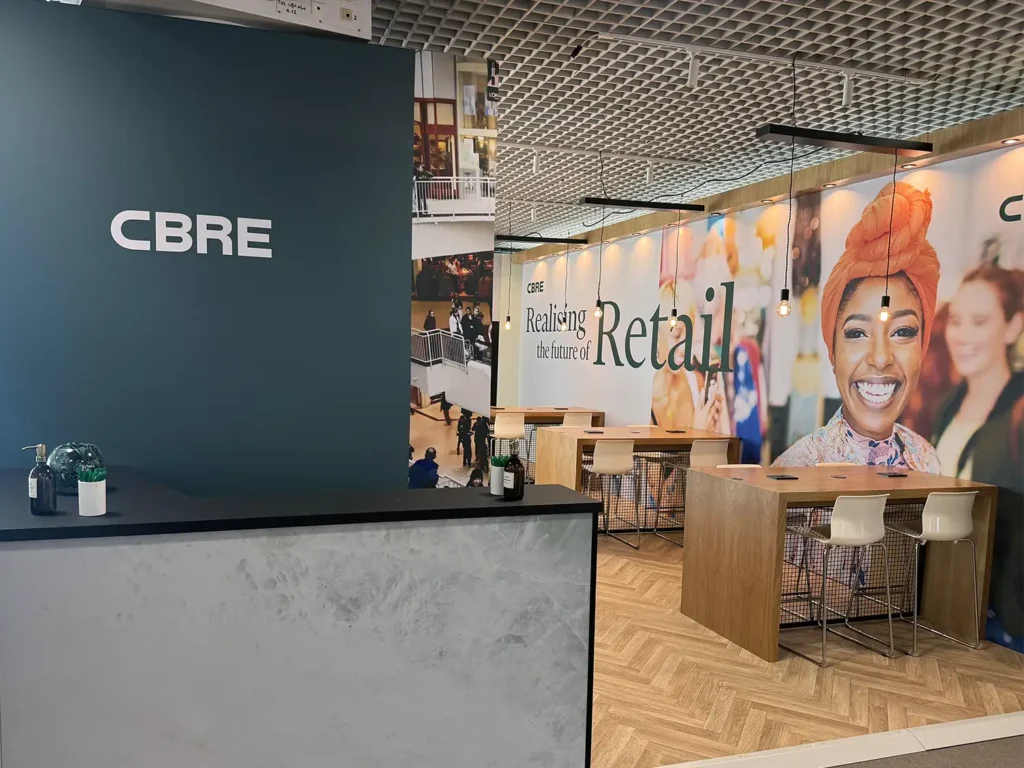

Since that first event, our role at MAPIC has grown and evolved year on year. The brief might stay the same (to design, build and deliver a stand that’s enticing, functional and unmistakably CBRE) but how we transform it into reality is always in motion.
Each year brings a new challenge: how do we make it even better than last time? It’s less about reinventing the wheel and more about evolving it with purpose.
That first year, it was all about striking artwork. The next, we introduced a natural world-inspired theme with lightboxes and LED strips to bring the outside in. Later designs embraced a sleeker, more minimalist look and feel.
As CBRE’s brand has developed, the stand has evolved right alongside it. Each new design captures the story of where the brand is at that moment, creating a space that looks great, feels inviting and, most importantly, functions as a dynamic meeting place.
Over the years, our relationship with CBRE has become about much more than design. We’re not just creating a stand; we’re delivering a complete event experience from start to finish. Each year, we take the brief and run with it, handling everything from initial sketches and specifications to build management and venue logistics.
We even have an event producer on site, working behind the scenes to keep everything running like clockwork. Need a quick fix or a lighting tweak? We’re already on it.
That kind of dependability builds real trust. CBRE know they can count on us to get things done, anticipating challenges before they arise and delivering the same high standard time after time.

Fast-forward to today, and we’ve just wrapped on MAPIC 2025. This year’s design built on everything we’ve created so far, adding a new layer of personality that reflects where the brand is heading.
After eight years (and soon to be nine) of collaboration, it’s more exciting than ever to see what’s next. Because for us, yes, MAPIC is an event, but it’s also proof of what long-term creative partnership can achieve.
So here’s to keeping things fresh, exploring new ideas and getting the job done—reliably, and with just the right amount of flair.
When our client, Vestergaard, came to us with an animation brief, we knew there was potential to do things a bit differently without compromising on production value or creativity.
The challenge was compelling from the get-go: bring to life the powerful impact long-lasting insecticide-treated nets have on the fight against malaria. It was immediately clear that the story needed to be told with impact—something rich in colour, texture and emotion to match the gravity of the message.
But the big question was: what was the best way to get there?
Creative challenges rarely come with just one solution. But by bringing AI on as a partner, we knew we’d be able to dramatically boost production value and creative quality. We’ve chatted before about how AI isn’t about replacing the human touch but rather giving you more choice—and our approach to this project was a case in point.
So we let our curiosity take the reins and ran a little test. Two versions, side by side: one made the traditional way, and another where we let AI lead the way. That way, the Vestergaard team had the freedom to decide which version best fitted their brief.
We started by testing the animation side of an AI platform, quickly finding that the results were inconsistent, mismatched and not up to scratch.
What they did do, though, was give us heaps of inspiration. While the animation was lacking, one of the early outputs sparked a strong visual direction. So we shifted focus, using the AI platform to generate imagery before handing it back to the humans to refine and animate with their irreplaceable flair.
The final workflow was roughly 80% handmade design and animation, with 20% AI input. This hybrid approach wasn’t about speed or budget, but flexibility. By using the best of both worlds, we could test ideas, iterate and respond to the Vestergaard team’s feedback without having to go back to square one each time.
Voiceover-wise, the team went with an AI-generated performance. Capturing an authentic accent, however, proved tricky, but we got there with a bit of finetuning, using voice changing which we then refined with AI. Once again, it came down to finding the right balance: AI kicked things off, and the human touch made it shine.
Many people think working with AI means clicking a button and getting a perfect output. In reality, it’s almost never that simple.
There’s also the idea that AI should automatically make things cheaper because it speeds everything up. While that can sometimes true, it’s not a given. Really, it boils down to cost versus value. AI doesn’t always bring down the price tag, but it can unlock value in ways traditional methods can’t.
It can also give us the chance to be even more creative (more on that here). AI is especially helpful in the early stages of the creative process, giving us more space to explore illustration styles, colour palettes and the like. In this case, it gave us chance to layer in more depth, texture and colour, and move through creative iterations far more quickly than if we’d ploughed on without. And the Vestergaard team thought so too.
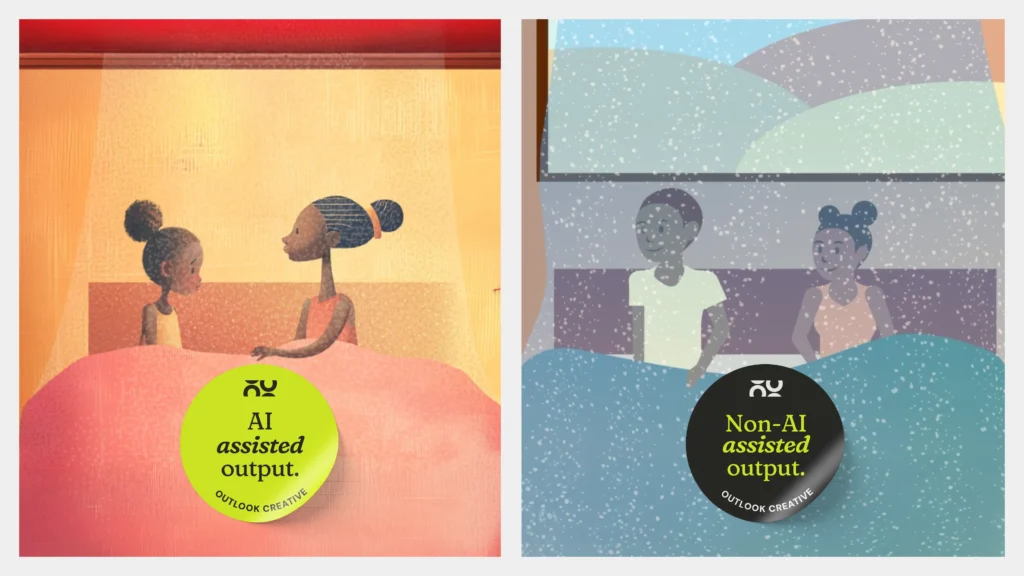
When we presented both versions—one produced traditionally, the other enhanced with AI— Vestergaard chose the latter, and were genuinely delighted with the quality of the finished animation.
But the thing is, there’s no such thing as a one-size-fits-all approach. No two projects are ever the same, and with AI evolving so quickly, every workflow ends up looking a little different too. That’s all part of the fun—tweaking and adjusting until we reach the best solution for each brief.
For us, AI isn’t a shortcut. It’s about balance. We’re still learning, and always will be. But one thing’s certain: the real magic still lies in the balance between human creativity and smart technology.
That’s what makes the work worth watching.
AI voiceovers are advancing at a rate of knots, and it’s easy to see why. They’re practical, efficient and can save serious time, especially when used in the right context.
What’s clear is that they’re a valuable addition to the creative process. An addition that means we have more tools in our toolkit than ever before. But rather than replacing what already works, AI voiceovers simply expand the options available.
For some projects, a human voice will be the natural choice; for others, AI may prove the smarter option—and often, a blend of the two can work marvellously. Our role in all of this is to help you work out which approach delivers the best results for your audience, timeline and budget.
…That’s the theory. Now for the practice.
We wanted to explore just how far AI voice tech has come. So we used our enterprise AI models to build a simple demo using a non-actor’s voice: one script, two reads—first by the human, then by an AI clone of the same voice. The example switches seamlessly between them.
What do you think?
Note: we used a fictional diabetes product script to show how AI handles medical terms. Any likeness to real products is purely coincidental.
This isn’t about replacing human voiceovers or picking sides. It’s about giving you more choice. We audition and sample both human and AI reads on your script so you can hear the difference for yourself.
Sometimes a human voice carries instinct, emotion or nuance that just clicks. Other times, technology can surprise you with speed, consistency and unexpected flow. Often, the magic happens somewhere in between.
Of course, AI isn’t flawless. Longer reads can get tricky, clones can shift between sessions, and technical language or names need a careful touch. Rights and transparency matter too—check out the EU AI Act for more on this.
But that’s where we come in: building glossaries, setting pronunciation guides, running quality checks and making sure that every voice is used with clear consent. By handling these details, we keep AI reliable, consistent and safe to use so you can make the most of what’s possible.
We’re here to remove faff and add value. Great work doesn’t come from tools alone; it comes from the choices we make. Our job is to help you make the right ones for your project, every time.
Michael has been promoted to Junior Producer for the Moving Image team, recognising the organisation, capability and enthusiasm he brings to every project.
Over the past year, he’s taken on more complex and demanding work, consistently stepping up and making his mark. His growth has been clear to see, and his contribution is making a real impact across the team.
As Shauna says, this promotion is a well-earned reflection of the progress Michael has made, and there’s plenty more to come. John agrees, describing his development as “a joy to witness.”
We’re excited to see what he achieves next.
“Michael’s development has been a joy to witness, and I’m certain that every single one of his colleagues will confirm it’s a well-deserved promotion. Well done.”
John Lloyd, Joint Managing Director
“Over the past year, Michael has truly come into his own—consistently stepping up to take on more complex and demanding projects with his trademark organisation and capability. His promotion is a well-earned reflection of the growth we’ve seen, and I’m genuinely excited to watch him continue to evolve and stretch his producing muscles even further.”
Shauna Swift, Senior Production Manager – Moving Image
We’re in the business of ideas, and ideas have impact. But that impact shouldn’t leave a heavy footprint on the world around us.
From the first spark to the final delivery, every choice we make together creates a ripple. So we ask the big questions early in the process, finding the lighter path wherever we can. Because creativity that harms the world it lives in just isn’t creative enough.
When you work with us, sustainability isn’t an afterthought—it’s baked in.
Together, we look for ways to reduce impact without losing ambition, so you can be confident that your project isn’t just hitting the brief, but treading lightly where it counts.
That could mean exploring different materials, rethinking travel plans or finding new life for preloved kit. Whatever it is, we’ll work through those decisions together, so the result makes a difference in both the work we deliver and its impact on the world we share.
We’ve picked up a few stamps of approval on our journey so far:
These aren’t just badges; they’re milestones that continue to keep us and our work accountable.
Sustainability isn’t a tick box, it’s a challenge to keep getting better. We start every brief with some planet-friendly questions to spark ideas and explore options:
If the answer shrinks our impact, we’ll go for it. If it doesn’t yet, we’ll keep asking until it does. This is how we work. With creativity, collaboration and a commitment to make each project kinder to the planet.
We believe great creative should leave nothing but a positive impression. If you do too, let’s talk. We’d love to create work that looks good, feels good—and does good.
It feels like only yesterday we launched the first edition of this magazine—but as the relentless march of time keeps reminding us, a lot can happen between ‘just now’ and ‘right now’. Especially in our world, where the pace of change—particularly in AI and audience engagement—feels less like a steady evolution and more like a rocket launch.
The response to our first issue? Genuinely overwhelming (in the best way). Thank you. Your feedback has spurred us on to keep sharing more of what makes Outlook Creative tick—because this magazine isn’t just a showcase of the work we do, it’s a reflection of who we are. As a business. As individuals. As people who live and breathe creative problem-solving.
Inside, you’ll find a mix of insight and opinion—our take on the ever-evolving industry we work in, from the rise of AI to new approaches in event engagement. You’ll also get a peek at some of the incredible client work we’ve been involved in (well, the bits we’re contractually allowed to share!).
Whether it’s thoughts on this edition or ideas for future ones, feedback is always welcome. And if anything in here sparks a conversation—about a project, a challenge, or just a curious ‘what if?’—we’re always up for that, too.
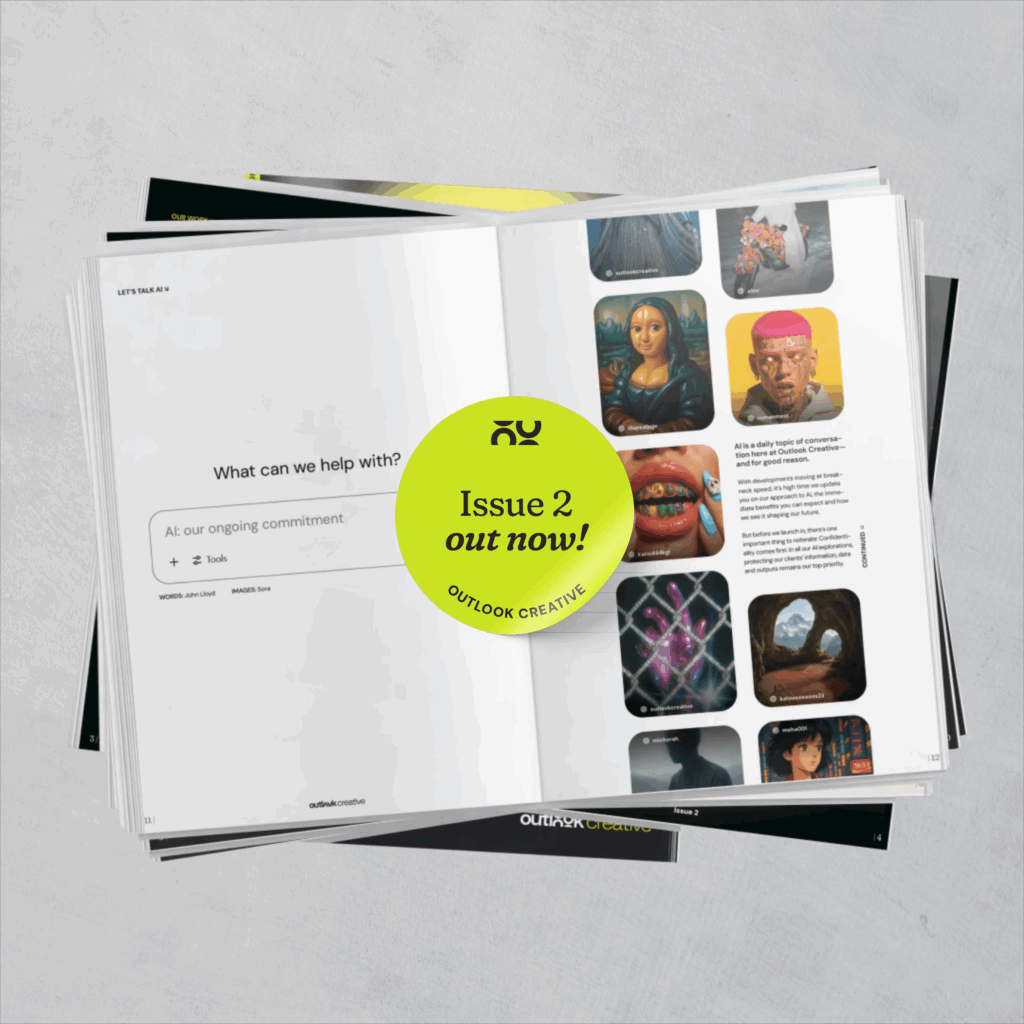
The European Accessibility Act (EAA) will become law in all EU member states on 28 June 2025. This landmark piece of legislation aims to ensure equal access to digital products and services across all 27 countries in the European Union.
The EAA also applies to any organisation that trades with the EU—which includes us here at Outlook Creative.
As a creative agency, we proudly work with a number of clients across Europe. We’re also an organisation that’s committed to inclusivity; we strongly believe that transforming creative into reality—the ‘thing’ we hang our hat on—is only successful if everyone can enjoy our solutions.
So let’s dig a little deeper into what the European Accessibility Act is, why it matters and what we’ve been doing at Outlook Creative to make sure we’re part of a more inclusive future.
The EAA is a directive of the European Union which was initially passed in April 2019. Its purpose is to improve the accessibility of products and services across all Member States by removing barriers created by divergent rules.
The legislation covers areas that have been identified as ‘most important’ to people with disabilities, including computers and operating systems, smartphones, audio-visual media, e-commerce, banking and more.
There are four core principles that underpin the EAA’s accessibility criteria, known as the POUR model (perceivable, operable, understandable and robust).
Organisations have until 28 June 2025 to audit their existing materials and fix any identified issues in order to become compliant.
Put simply, it’s about inclusion. In our increasingly digital world, access to information and services is not a luxury: it’s essential for being able to fully participate in society.
It’s soon to be a legal requirement, but it’s always been an ethical one. Accessible websites and digital tools help make sure that people with visual, auditory, motor or cognitive impairments can move through the world without added barriers.
It’s also about universality. Accessible design practices benefit everyone. Think about the last time you watched a video with subtitles, used a voice assistant or adjusted the font size to make something easier to read. Many of us rely on accessibility features on a daily basis—they make our lives easier. What the EAA does is make improved user experience for everyone a legal requirement. And that can only be a good thing.
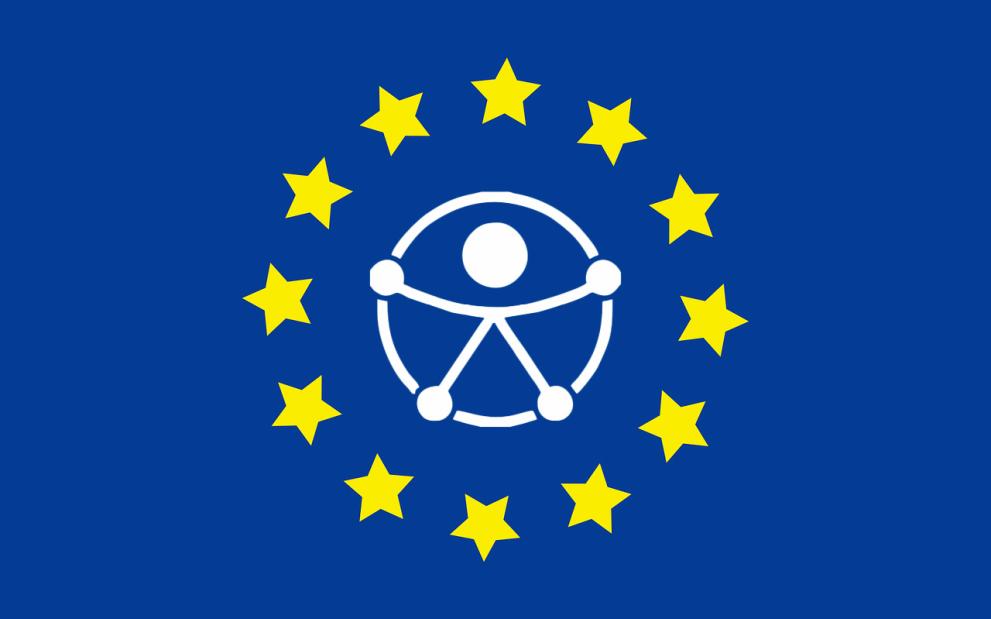
Well, first and foremost, we’re not waiting until June. We’ve been busy behind the scenes reviewing, discussing and reviewing again to make sure we’re continuing to deliver accessible solutions for our clients.
Our preparations have taken three main tacks:
Internal training
Natalie from our UI team delivered a super-informative training session to our internal colleagues last autumn. We discussed the EAA, what it means for us at Outlook Creative and key things to look out for when creating accessible digital solutions.
Updates to systems & processes
To hold ourselves accountable, we’ve made an addition to our internal briefing tool. Now, any Seeker returning a piece of work must confirm that their designs comply with European accessibility standards.
Open conversations
Accessibility—digital or otherwise—is our shared responsibility. It’s also an ongoing process. By having conversations with our clients around inclusive design and making it an intrinsic part of how we measure the success of our work, we all contribute to making our world a fairer, more inclusive space.
Here’s to a future of digital design that can be enjoyed by everyone.
Need help getting your materials EAA-ready before June? We’re here to make sure your digital presence is compliant and inclusive. Get in touch and let’s chat.
Terri has been promoted to Senior Production Manager for Design & Digital—recognising the experience, steady leadership and collaborative spirit she brings to the team.
This marks a particularly strong year for Terri. With more than a decade at Outlook, she continues to lead by example—balancing detail, delivery and people with care and consistency. Over the past six months especially, her contribution has made a real impact across the business.
As our Joint Managing Directors Adam Sherlock and John Lloyd noted, this next step feels both well-earned and full of potential.
We’re delighted to see Terri take on the role.
“Collaborating closely with Terri over the last six months has been a pleasure. Terri is diligent and has a great eye for detail. In addition, she has proven to be a strong leader and I am looking forward to this next exciting step in her journey. Congratulations, Terri.”
Adam Sherlock, Joint Managing Director
“Having worked with Terri for nearly 11 years, it’s clearly her strongest year yet. Well done, Terri, and enjoy the journey ahead.”
John Lloyd, Joint Managing Director
After six months in the interim position, Sarah Skates has now been formally appointed as Operations & Business Support Manager.
The new title reflects the scale of Sarah’s contribution across the business—particularly her role in keeping day-to-day operations running smoothly and supporting the wider team through a demanding period of delivery.
Her promotion follows a strong year professionally, including recognition as runner-up in the Seeker Awards. As noted by Joint Managing Directors Adam Sherlock and John Lloyd, Sarah has become a key part of the way Outlook operates—bringing consistency, dependability and a growing confidence that’s been felt across the agency.
We’re pleased to see her step into the role permanently.
“Every business needs a Sarah. Thank you for your ongoing commitment and for everything you do behind the scenes to keep the Outlook Creative wheels turning.”
Adam Sherlock, Joint Managing Director
“Runner-up in the Seeker Awards and a promotion—what a year! Watching Sarah’s confidence grow throughout the year has been fantastic, and I feel there’s even more to come. Well done.”
John Lloyd, Joint Managing Director
Recently, our Joint MD, Adam Sherlock, teamed up with our Creative Director, Peter Michels, and Art Director, Andy Upton, to explore how AI is pushing us to be more human, more analogue, and more creatively unhinged (in a good way).
There’s been a flurry of conversations recently about whether or not AI is creative. Is it going to wipe out the creative community in one Spielbergian zap? Should you finally open that doggie bakery your neighbourhood desperately needs?
Maybe we’re looking at this all wrong. Maybe we’re not asking the right questions.
It’s not about whether AI is creative. It’s about how AI is affecting our own creativity and our creative futures—positively. This is about us after all.
I’d like to approach this discussion of AI in the design space from a different perspective: what if AI actually sets us free creatively?
I sat down with our Art Director, Andy Upton, to talk about how AI isn’t here to steal our creative souls—it might just let us fly. If we play this right, if we own this moment, AI could be our ticket to being more human, more analog, and more unhinged (in a good way) with our ideas. At least as artists. We could be quicker, stronger, and capable of grabbing the undiscovered.
Hear me out.

“The reality of AI is that it’s a simulation of creativity,” Andy said after a sip. “It’s taking what it’s learned and piecing it together. So, is it creative? Not in the truest sense of human creativity.”
AI isn’t out here dreaming up the next postmodern masterpiece. It’s pulling from what already exists, remixing it like a DJ with unlimited samples. It can assist, but it can’t originate.
That’s where we come in.
The wild originality. The gut feelings. The moments where you think, this is either genius or completely certifiable. The subjective messiness of creativity—that’s human.
For the longest time, beyond the artistic spark, being a designer meant mastering tools—whether it was charcoal and ink, scissors and glue, or Adobe. But now?
Still true. But AI shifts the game.
“AI takes away the more skill-based element of knowing how to do something and pushes you more into the idea side of things,” Andy pointed out. And that’s liberating.
Being creative for creativity’s sake. Digging into the dusty corners of your heart and soul. AI lets us actually open up areas of our brain that haven’t raised their hands in a while.
Instead of grinding for hours in soul-crushing stock libraries, a well-trained prompt lets us generate those elements ourselves—and they’re ours. There’s even a sense of pride in that.
Think about the exploration on all levels—concepting, inspiration, building elements, even proofing. It’s not about losing craft—it’s about separating craft from creativity.
At this point, it’s critical to realise that AI replaces nothing whole. It’s still a skill. A tool. And like any tool, it needs the piloting of a craftsman. Even then, it can’t do everything—it’s just one coat of paint.

I have cameras that haven’t smelled silver in decades, records hibernating in the “B’s” that haven’t hit the mat since consistent seasons (I haven’t forgotten about you, Bangles), and ornate plates that house a dozen oysters perfectly—that have been used… never.
None of these things are going anywhere.
I’m not a hoarder.
There’s a visceral connection—a memory of that emotion. These are crumbs of our creative therapy.
What I’m getting at is that AI is actually making a lot of us less digital. It’s pushing us back into the analogue world, giving us more time to experience the things that make us who we are.
We’ve been freed up to get our hands dirty again. Get everything dirty.
“I’ve seen more designers excited about getting physical with their work—painting, collaging, using their hands—because AI can’t replicate that experience,” Andy said. “There’s something about physically pushing paint around that you don’t get from just prompting MidJourney.”
AI is pushing us back toward our roots as artists and storytellers. The things that feel raw, messy, and personal—AI can’t touch those. And that’s exactly why they matter more than ever.
That’s the paradox.
AI gives us speed, efficiency, and endless iterations, but it also reminds us why human touch matters. It helps us focus on the feeling behind the work, rather than just the mechanics.
And that’s not to say using AI isn’t a part of this analogue evolution. Andy’s personal work proves it. Finding the right image or pattern to “cut out” for his compositions has dropped the needle on the next chapter of his visual storytelling.
The problem isn’t AI itself—it’s the idea of AI. It’s the fear of AI.
But let’s be real: people once thought Photoshop was cheating. Now? It’s just part of the process.
“It’s just expected. AI as a term will probably disappear and just become part of most of our tools. It’s already happening,” I told Andy.
“It’s important to remember it’s just part of the process, not the process,” Andy said. “Like Photoshop helped you get where you were going, AI does the same—but you need to know when and how to use it. That’s a skill on its own.”
Narratives always change over time.
AI isn’t a supervillain. It’s not the main character, either. It’s that background extra holding a boom mic, making sure we sound good while we do our thing.
It’s here to help us create and evolve. To make us wilder, more unpredictable, and push storytelling beyond the expected seven storylines.
I’m not treating it like a threat.
I’m treating it like the overqualified, unpaid intern who still has a lot to learn.
And I haven’t had to talk to HR in weeks.
It might even bring you a taco someday while you’re busy changing the creative world.
And take comfort in this: if AI were really here to replace us, it would have come up with a better closing line than this.
So, what do you think? Does AI make us more creative or am I off base? Is it an overqualified intern, or are we actually training it? Drop your thoughts…somewhere?
Feeling inspired? See how we can free your mind on your next project. Get in touch to see how we can collaborate.